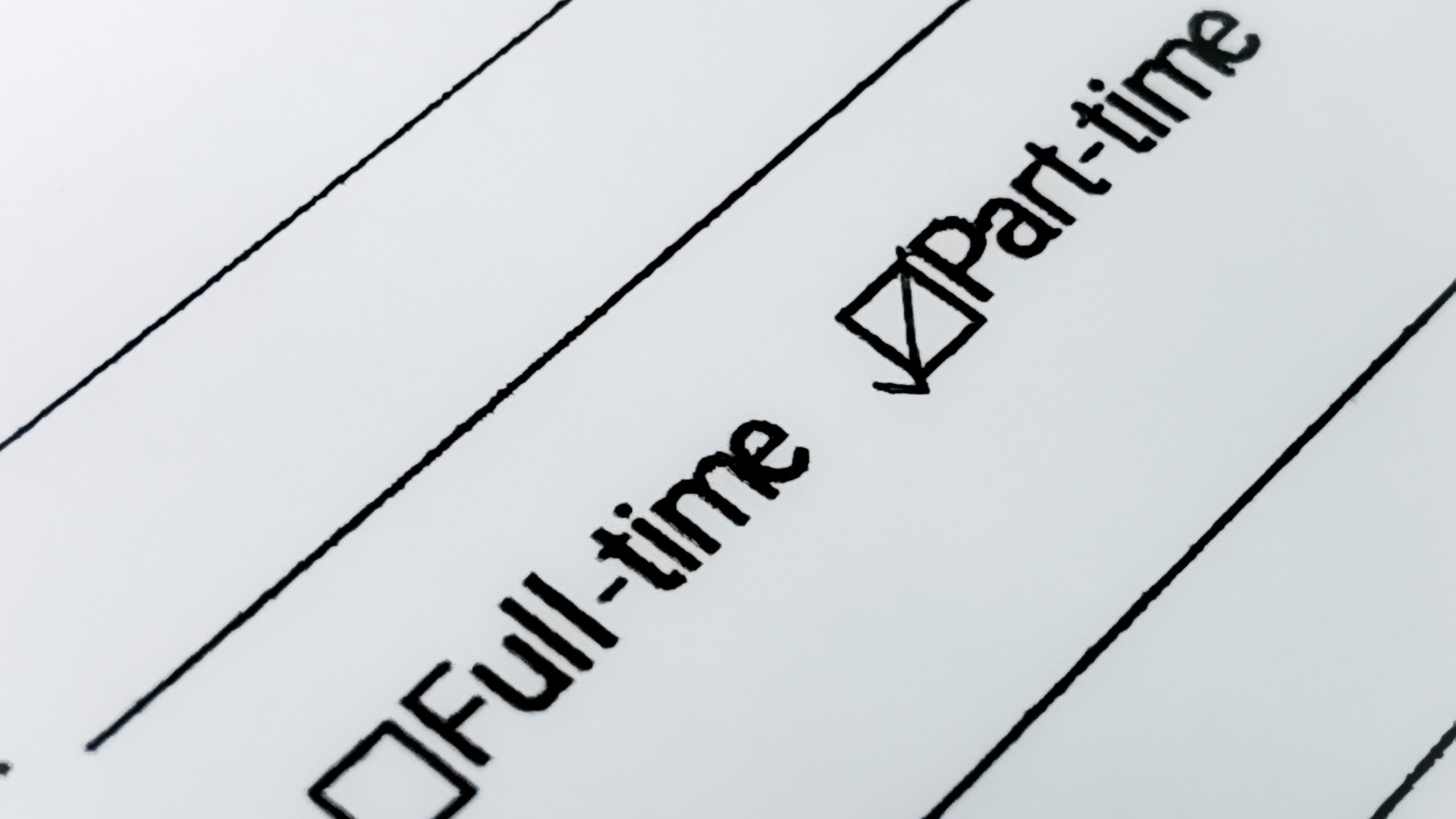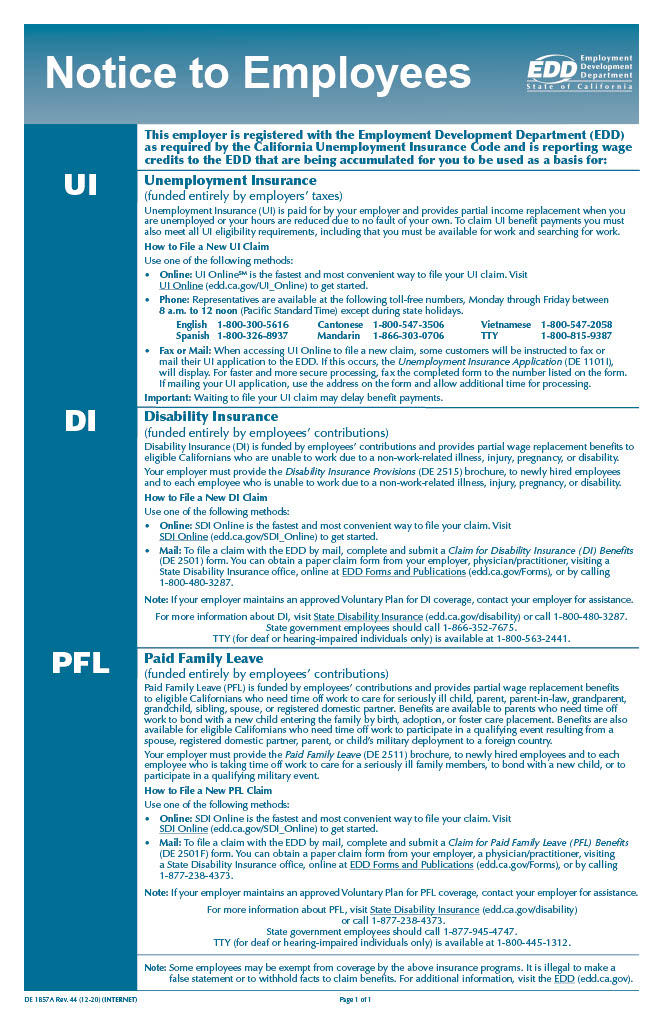
Workers whose hours have been cut and are now working part-time, or those who have been laid off temporarily, may be eligible for unemployment benefits in California.
California's Unemployment Insurance (UI) program pays benefits to individuals who have become unemployed or partially unemployed and who meet the program's eligibility requirements.
California has several programs that offer "partial" unemployment benefits: A portion of the benefit you would receive if you were fully unemployed, reduced to take into account your earnings.
In California, someone is considered "unemployed" during any week in which the person's regular wages, minus $25 or 25% of those wages (whichever is more), is less than he or she would earn as a weekly unemployment benefit. In this situation, an employee who meets the other eligibility requirements would receive a check for the difference.
Unemployment insurance benefits provide temporary financial assistance to workers unemployed through no fault of their own who meet California's eligibility requirements.

Managed by the California Employment Development Department (EDD), the UI program is a form of insurance that almost all employers pay into on behalf of their workers. The employers’ payments collectively cover the cost of the unemployment benefits paid to all employees laid off or furloughed, or whose hours are sharply reduced.
To be eligible for this benefit program, you must a resident of California and meet all of the following:
There are two methods that can be used to calculate the base period: the standard base period method and the alternative base period method. Under the standard base period method, the first four of the last five base period quarters prior to the date that the individual files the UI claim are used to determine if an individual can establish a claim. If an individual does not have sufficient wages using the standard base period method to establish a new claim, the EDD will use the second method called the alternative base period method. Under the alternative base period, the last four base period quarters prior to filing the new claim are used.
The benefit year is the 52-week period from the first day of the week that the individual files a valid UI claim.
The individual's weekly benefit amount is determined by taking the amount of wages the individual earned in their highest base period quarter and comparing it to the EDD's Unemployment Insurance Benefit Table.
The minimum weekly benefit amount is $40. The maximum weekly benefit amount is $450. Under the Coronavirus Aid, Relief, and Economic Security (CARES) Act, discussed below, eligible individuals may qualify for an extra $600 weekly payment.
Under the CARES Act, eligible employees could receive California unemployment insurance or benefits for up to 39 weeks.
If you are on temporary layoff or work reduction, you may be eligible for unemployment benefits under California's partial benefit program. This program is for partially unemployed individuals whose employers want to retain them, despite a current lack of work. Whether you were laid off and do occasional odd jobs or you are still employed at reduced pay and hours, you can collect benefits if you meet the above requirements.

The employer must complete a "Notice of Reduced Earnings" form, and the employee must fill out part of the form. By applying for benefits through this program, an employee doesn't have to show that he or she is able and available to work and looking for other work. Because the situation is supposed to be temporary and the employer wants to keep the employee, the employee isn't obligated to conduct a job search or accept work immediately.
As noted above, an individual is considered “unemployed” in any week of less than full-time work, if the wages payable to them with respect to the week, when reduced by $25 or $25% of the wages payable, whichever is greater, do not equal or exceed their weekly benefit amount. Once it is determined that the individual is “unemployed” and eligible for partial UI benefits, then the EDD will calculate their weekly benefit amount and reduced weekly benefit amount.
Assume that the individual earns $13 per hour and has worked five days a week or 40 hours for the previous 15 months (five base period quarters).
Determine if the individual can establish a valid UI benefits claim based on their previous wages. To establish a valid UI claim, the EDD looks at (1) the highest paid quarter base period (3-month period or 13 weeks) to see if the individual earned at least $1,300; or (2) the highest base period quarter to see if the individual earned at least $900 and whether the total base period earnings added together equals 1.25 times the individual's highest base period quarter earnings
Using the standard base period method, the individual's highest base period quarter is:
This individual is earning $6,760 in their highest base period, which is more than the $1,300 needed to establish a valid UI benefits claim.
First, calculate the individual's weekly benefit amount. This is the amount the individual would receive through benefits if they were totally unemployed. The individual's weekly benefit amount is determined by taking the amount of wages that the individual earned in their highest base period quarter and comparing it to the EDD's Unemployment Insurance Benefit Table.
EDD's Unemployment Insurance Benefit Table
In this scenario, the individual is earning $6,760 in their highest base period quarter. Using the EDD's Unemployment Insurance Benefit Table, the individual's weekly benefit amount is $260, which is the amount they would receive if totally unemployed.
Second, if the individual's hours are reduced from 40 hours per week to 24 hours per week, determine if the individual is “unemployed” and if they are eligible for partial UI benefits. To do so, look at whether the individual is working less than full time and whether the wages payable to them with respect to the week, when reduced by $25 or $25% of the wages payable, whichever is greater, do not equal or exceed their weekly benefit amount. Assume the individual's weekly benefit amount is $260, as calculated above.
In this scenario, the individual is eligible for partial UI benefits:
Third, calculate the individual's reduced weekly benefit amount, which is the amount that the individual will receive under partial UI benefits. For partial UI benefits, the individual is paid the amount equal to their weekly benefits amount (calculated above) minus the smaller of the following: (1) the amount of wages in excess of $25 payable to him or her for services rendered during that week; or (2) the amount of wages in excess of 25% of the amount of wages payable to him or her for services rendered during that week. Assume the individual’s hours are reduced from 40 hours per week to 24 hours per week.
This individual's reduced weekly benefit amount is calculated as follows:
This individual would receive a reduced weekly benefit amount of $26 per week. Therefore, this individual would be earning a total of their current weekly wage ($312) plus their reduced weekly benefits amount ($26) for a total of $338 per week.
In summary, if the individual worked full time at $13 per hour and 40 hours per week, this individual would make $520 per week. If the individual's hours were reduced to 24 hours per week, this individual would receive a total of $338 per week ($26 in reduced UI benefits and their $312 current weekly wages). If the individual is totally unemployed, the individual will receive a weekly benefit amount of $260.
The California Unemployment Insurance Work Sharing Program offers businesses the ability to reduce more total employees' hours and wages as an alternative to avoid layoffs. This program applies to employers that cut the hours of at least 10% of their workforce (and at least two employees) by at least 10%.
These employers can submit a work-sharing plan to the state agency. If the agency approves, it will send certification forms to the employer, which the employer and employee complete for each week of reduced hours, and submit to the agency. The employee is then eligible to earn a prorated share of his or her weekly unemployment benefit.
For example, if the employee would be entitled to the maximum $450 benefit if fully unemployed, and the employee's hours were cut by 20%, the employee would be eligible for a weekly unemployment check of $90 (20% of $450).
If you have sole proprietorship of an organization looking to take the business step to reduce workers hours and require additional assistance, you may require professional help in a confidential relationship.
Employment law firms are able to help with specific information related to your case and provide the privileges of an attorney-client relationship.
Ideally, you want to contact a law firm or attorney advertising free evaluation of your case without any pre-recorded messages, scripted system to send text messages, autodialer, or other automated technology in their available services.
For the privileges of an attorney-client relationship to protect your sensitive or confidential information, contact the law firm of Freeburg & Granieri today.
Our clients become friends, confidants, and repeat customers. Former clients are our best referral source.
Do not be a commodity, find an attorney who treats your legal issue with the care it deserves.

